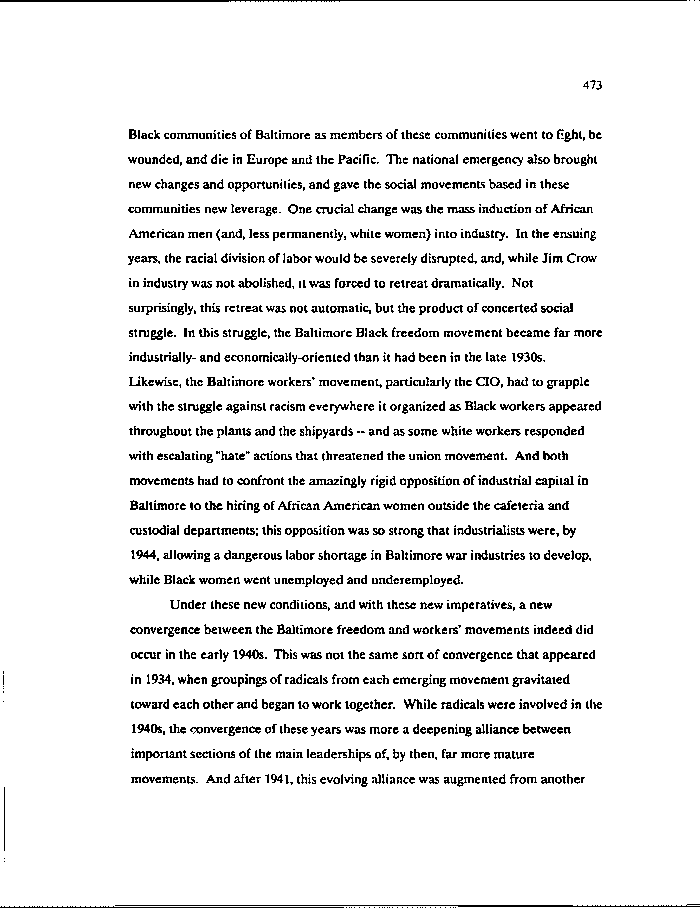|
473
Black communities of Baltimore as members of these communities went to fight, be
wounded, and die in Europe and the Pacific. The national emergency also brought
new changes and opportunities, and gave the social movements based in these
communities new leverage. One crucial change was the mass induction of African
American men (and, less permanently, white women) into industry. In the ensuing
years, the racial division of labor would be severely disrupted, and, while Jim Crow
in industry was not abolished, it was forced to retreat dramatically. Not
surprisingly, this retreat was not automatic, but the product of concerted social
struggle. In this struggle, the Baltimore Black freedom movement became far more
industrially- and economically-oriented than it had been in the late 1930s.
Likewise, the Baltimore workers* movement, particularly the CIO, had to grapple
with the struggle against racism everywhere it organized as Black workers appeared
throughout the plants and the shipyards - and as some white workers responded
with escalating "hate" actions that threatened the union movement. And both
movements had to confront the amazingly rigid opposition of industrial capital in
Baltimore to the hiring of African American women outside the cafeteria and
custodial departments; this opposition was so strong that industrialists were, by
1944, allowing a dangerous labor shortage in Baltimore war industries to develop,
while Black women went unemployed and underemployed.
Under these new conditions, and with these new imperatives, a new
convergence between the Baltimore freedom and workers' movements indeed did
occur in the early 1940s. This was not the same sort of convergence that appeared
in 1934, when groupings of radicals from each emerging movement gravitated
toward each other and began to work together. While radicals were involved in the
1940s, the convergence of these years was more a deepening alliance between
important sections of the main leaderships of, by then, far more mature
movements. And after 1941, this evolving alliance was augmented from another
|

